Warhammer Quest 2: The End Times is now available for PC. Although originally a mobile offering, the game and its heroes have made their way to your rigs featuring ultrawide support and all the DLC bundled in one package. While I do have some qualms, that doesn’t change the fact that Warhammer Quest 2: The End Times has a lot to digest — from character classes, item rewards, even stat allocations, and min-maxing. There’s a lot to learn so we’ve decided to provide a guide with a number of tips to help out would-be adventurers.
Note that our official review also has detailed explanations of the game’s mechanics. Feel free to check it out to gain a better understanding of the basics.
1. Random Ruckus And Save Files
There are a lot of randomized elements in the game. From the available heroes you can recruit in taverns to the rewards you can earn after dungeon runs. Even your stat progression when leveling up is randomized. RNG can be a cruel mistress at times. For instance, it can give you amazing rewards after clearing hordes of Chaos followers, or it could give you a measly amount of gold.
That’s where having a copy of your save file comes into play. Warhammer Quest 2: The End Times has an autosave feature that tracks your progress anytime you move to a location, level up, buy an item, or for each turn in a dungeon. Keeping a previous save file can be handy. You can find it under “Users/<Name>/AppData/LocalLow/Perchang/WQ2.”
There are a number of files here. Just create a backup folder, then copy all the contents of the main folder there — well, except for the Unity folder, you don’t need that.
If ever you get a result you don’t want, such as a stat allocation that isn’t necessary for your build (like Intelligence on a Slayer or Greatsword), just copy the previous files from the backup folder to the main folder. Make sure you’re at the main menu where it says “Click To Play” or have the game closed while copying your backup files.
Side Note: You don’t really want to save scum often, especially when you get unfortunate results from random travel events. For the most part, try to avoid doing a travel event that requires a stat check unless you have a character with eight points or more for that stat. This would generally mean a successful check (and maybe a free item).
Now, of course, the above seems a little too gamey, even akin to cheating. God forbid we do that in a single-player game! But it’s completely up to you if you want to do that or just keep the random results you obtained. It is time-consuming, but it can help you min-max and get the stats you want early on.
2. Stat Allocations And Min-Maxing
Speaking of stats, Action Points (AP) are the most important to gain since these determine everything you can do during a dungeon run. Your inventory slots are also important — six slots are fine, more are even better. HP is almost trivial during the mid to late-game unless you’re building a tanking class. That’s because you can generally take out most opponents before they even reach you (or hit you with their arrows/spells).
As for the four other stats — strength, dexterity, speed, and intelligence — well, here’s a more detailed explanation:
- Speed (SPD) is highly important if you want to keep chaining your deathblows; the more, the better. This is also optimal to boost when you’re using speed build classes like Wardancers or Slayers.
- Strength (STR) is also a good stat to increase since it determines the damage you do with every weapon. Unless said otherwise by item tooltips, STR will be the default stat used for damage.
- You’ll be fine with Dexterity (DEX) at five points. Your base chance to hit is always 60 percent, and those extra points (+4 chance-to-hit per point) bring you up to 80 percent accuracy. If you have low DEX, you can offset this with SPD since you’ll attack more often via deathblows.
- Intelligence (INT) is next to worthless unless you’re using an int-focused build like a Sorceress or Mage. Since it only boosts spell damage, you won’t see any mileage from it if you’re just swinging your strength-based weapons.
3. Take Note Of Resistances… Or Not
During the first act of the game, you’re bound to encounter a number of enemies resistant to piercing weapons (ie. bows). That means crushing or slashing weapon types might be better, right? Should you just spend some gold obtaining one, or leveling a different character that can help out?
Well no, not quite. While the early game might have a number of slightly resistant mobs, they generally have low HP, so much so that a single attack could kill them outright. Giant spiders, pox zombies, plaguebearers and more need not bother you. Beastmen aren’t even worth mentioning since they die easily.
Later on, once you encounter Skaven assassins or Chaos Warriors, that’s when the challenge ramps up… a bit. That’s because your bread-and-butter attacks, once you get used to your party, will still be viable until the endgame especially once you gain better gear or have more AP. Truth be told, I never felt the need to switch weapons often for most of my playthrough The only exception would be piercing attacks or ranged attacks since later enemies are resistant to them.
4. Feeding Kills
Part of what made Warhammer Quest 2: The End Times fairly repetitive was because almost every battle revolved around opening a door and just hanging back while waiting for enemies to funnel in. You could even throw a bomb or happily freeze them and they won’t care. From there, you just repeated the same attacks as before. In my case it was:
- Open door
- Empire Captain uses Explosive Pistol until out of AP
- Two range classes — ie. Sorceress or Glade Guard — start peppering ranged opponents (lowering their health or killing them) until out of AP
- The fourth hero (someone I’m boosting) will kill anything that gets close
- Repeat until dungeon ends
That’s because you gain more experience points from kills. You can feed your newly-recruited characters with kills to make them level up faster. Alternatively, you can just go ahead and kill everything that moves regardless of the character you want to level.
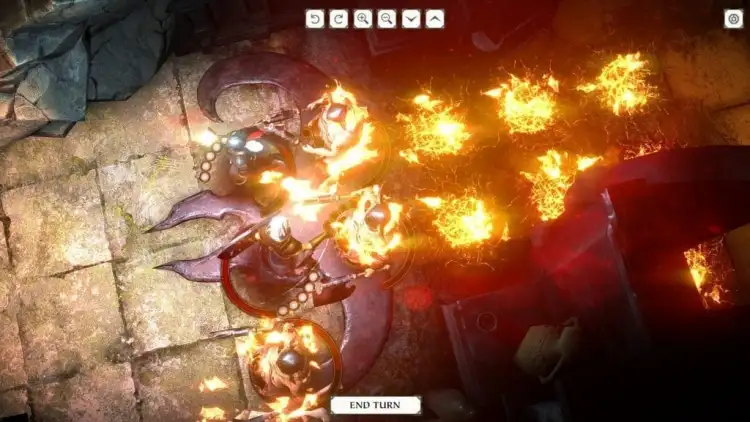
Who will win: A disease-ridden daemon infused with the blessings of Grandfather Nurgle? Or a punchy girl?
5. Class Combinations
Warhammer Quest 2: The End Times has 12 hero classes for you to recruit and master. Initially, you might think that’s a lot to take note of, but the reality is that there’s barely any difference with what each can offer outside of basic roles (melee versus ranged; tank versus non-tank). For instance, tanky classes are those that can equip shields, that’s it. And even then, they still fulfill the role of a pure DPS class since some weapons make them absolute powerhouses. You can also choose to bring four of the same class if you prefer.
A basic rule of thumb, though, is to have at least two dedicated ranged classes from the early to mid-game. That’s because they can outperform your melee classes by a mile especially in rooms with lots of archers or casters. Taking out mobs from a distance while your melee heroes move in, or just hanging back a doorway and sniping ranged threats, should be a priority. When enemies become resistant to ranged or piercing damage, that’s when your melee classes truly shine.
Any class can function well as long as you build them up properly. As for me, here are my impressions from my 30-hour playthrough:
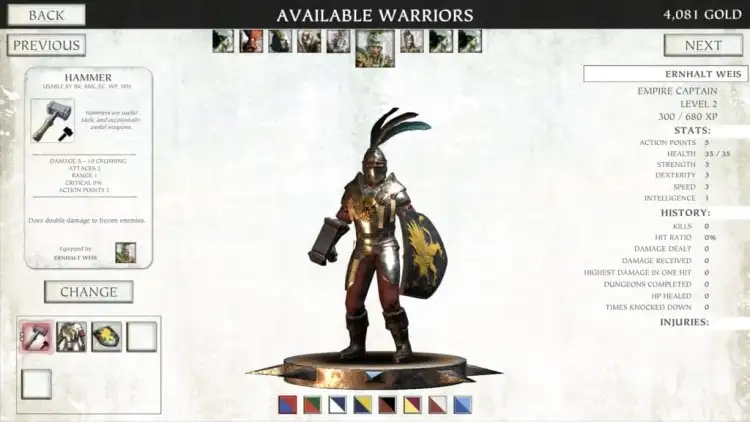
The dilemma of Markus Kruber: use two-handers, or pretend to be a tank like Bardin. That, and the fact that he has to avenge his two older brothers who were killed by John McClane.
Empire Captain
- can wield explosive pistols and bombs for crowd-control
- can equip shields; focused on crushing damage-type weapons
- balanced stats; prioritize STR/HP
- never found any use for buffing/debuffing abilities (shouts)
- Rating: 4/5
Warrior Priest
- can equip shields; focused on crushing damage-type weapons
- can use bombs
- blessings/prayers don’t require AP to cast (free buffs/attacks with short cooldowns)
- balanced stats; prioritize STR/HP
- Rating: 4/5
Blood Knight
- can equip shields; focused on slashing damage-type weapons
- can heal self with an ability that lets you bite opponents (they’re vampires after all); other abilities are costly
- hero choices are skewed more towards STR
- Rating: 3/5
Bretonnian Knight
- can equip shields; focus on crushing or slashing weapons
- can use bombs (how unchivalrous!)
- most abilities are buffs but they’re either costly or unnecessary
- can “riposte” or counterattack
- balanced stats; prioritize STR/HP
- Rating: 3/5
Wood Elf Glade Guard
- ranged archer with minimal use for melee weaponry; piercing-type damage due to bows
- ridiculous range for a number of weapons
- will, sadly, miss often due to resistance stats of mobs (piercing and ranged resistance in the early and late game)
- focus on SPD with some extra DEX
- Rating: 3/5 for most of the game; turns into a 1/5 near the end
Dark Elf Sorceress
- ranged magic caster; weapons/items are geared for INT-focus
- some staves/spells have high crit chance; some are costly
- Chill Wind to freeze enemies is extremely useful in later levels
- hero choices are skewed more towards INT
- Rating: 5/5
High Elf Mage
- ranged magic caster; weapons/items are geared for INT-focus
- has offensive spells but a number are for support
- not as good as her Naggarothi cousin
- hero choices are skewed more towards INT
- Rating: 3/5
Witch Hunter
- melee weapons (slashing/piercing) are viable; ranged options include pistols but some are costly; use explosive pistols instead like the Empire Captain
- can gain passive buffs based on enemy types (ie. increased STR versus Chaos); has debuff support skills
- STR or INT since he’s a jack-of-all-trades minus the ability to use shields
- Sigmar bless his ravaged body since I never found much use for him
- Rating: 3/5
Dwarf Slayer
- melee class; crushing or slashing weapons
- equipped runes provide stat bonuses versus enemy types, including one which ignores resistances
- can be STR-based or SPD-based depending on your hero’s starting stats
- copy your earlier save if you end up with INT bonuses when you level up; it’s such a waste that Gotrek and Ungrim will consider it a grudge if you continue with your playthrough with a stunted stunty
- Rating: 4/5
Greatsword
- melee class; two-handers only; obviously no shields
- most weapons have high AP usage
- balanced stats all around
- viable but other melee classes can do better; takes a lot of work to be on par with other room-clearing melee DPS
- Rating: 2/5
Ogre
- melee class; crushing weapons for the most part
- most hero choices have low DEX (can be increased with items)
- high base HP; high moblity via an ability
- happily clears rooms; too bad there isn’t an animation where he eats people
- Rating: 5/5
Wardancer
- melee class; slashing or piercing weapons
- can clear entire rooms without issues
- extremely high mobility and some hero choices start out with high SPD
- focus on SPD and equip items that use SPD as the basis of attacks
- Rating: 5/5 — I’d say a 6/5 is also possible
6. Not All Heroes Are Created Equal
While we’re on the subject of hero classes, it might not be noticeable at first for newcomers, but heroes all follow the same baseline stat allocations depending on their names. Check out their names and you’ll discover their duplicates which have the same starting level, stats, and items. This means certain characters are better suited in the long run — whether it’s because of the items they already have pre-equipped, or because of their starting stats.
A good comparison we can make is for these two Wardancers. First, there’s Dillios (as you can see in the image above):
- Level 2 by default
- 5 AP
- 20 HP (you get +5 HP if it’s the stat that’s boosted when you level up)
- 3 STR
- 4 DEX
- 5 SPD
- 1 INT
Next, there’s Derovan:
- Level 5 by default
- 6 AP
- 30 HP (you get +5 HP if it’s the stat that’s boosted when you level up)
- 3 STR
- 4 DEX
- 8 SPD
- 1 INT
Derovan is ahead by 1 AP, 10 HP, and a whopping 3 SPD! It essentially means he’s had six level ups compared to Dillios when we count the stat allocations, even though they’re only three levels apart! And the man’s even injured!
The goal here, if you truly wish to min-max with the best possible group composition, is to look at the default stats of the characters you’re bringing along. Then again, if you don’t think a couple of points is worth it, that’s totally fine as well. The game isn’t challenging enough that it requires a lot of number-crunching.
7. More Gold, No Teef
Gold can be hard to come by at times because Warhammer Quest 2: The End Times requires it for buying items and leveling up. Because RNG enters the mix, you could also end up with 50 to 100 gold for lengthier dungeon runs. More often than not, you’d probably sell items you won’t use just to make up for the expenses.
There is, however, an even better way. As previously mentioned, different characters have their own baseline stats by default. It just so happens that you can also get these characters as rewards in some side dungeons.
There’s no point in splurging on recruitment when you can kill a few Skaven ratmen or Beastmen gors and the reward is a level 3 or level 5 hero. Once you gain said hero and you already have someone who’s better, just sell them in a tavern. You can also sell the items that they come with pre-equipped if you don’t need them. I must’ve gotten three Dillioses already and I sold them all, poor guy. He’s as useless as a hibernating Orion.
8. The Best Item?
Last but not least, your gold and characters would go nowhere if you don’t have the right items and abilities. While Warhammer Quest 2: The End Times does have around 200 items (including spells and abilities), not everything is particularly useful. I’ve mentioned in the hero classes breakdown that some weapons or abilities are too costly to even matter, and that’s a problem you’d encounter from time to time. One deflected attack with a high AP-cost weapon means wasting all of that in one go. With around five to seven AP, you’d want to do as many attacks or casts as possible in one turn, right?
That leads us to the single best item in the game: Weapon Master. This accessory lowers all AP costs of weapons and abilities by one point. That mace that costs 3 AP to swing? That’s just 2 AP now. Bows that require 2 AP? Well, say hello to single AP-cost attacks. It won’t go below one, so you’re still fine with your knuckledusters.
What’s that you ask? Knuckledusters? They’re also one of the best weapons you can obtain and they’re ridiculously cheap. Equippable by Blood Knights, Bretonnians, Empire Captains, Warrior Priests, and Witch Hunters, Knuckledusters cost one AP to use, have two attacks, a 70 percent critical chance, and a 50 percent chance to do double damage. Combine this with your stat coefficient and you’re looking at the cheapest way to obliterate entire hordes by punching them all in the face! Runefang is a distant second. It shines a lot more during the endgame since it ignores resistances and, by then, you’ll encounter heavily-armored opponents.
Explosive Pistols, quite frankly, are the most cost-effective way to clear rooms via AoE damage. That goes the same for Fire Bombs since enemies will likely walk through infernos just to reach you (damaging themselves each turn). These cost only 1 AP if you have Weapon Master.
Eventually, you’ll still run out of AP… unless you have Relentless. This accessory adds one AP whenever you kill an opponent. Combine this with an Amulet of Sea Gold or Amulet of Swiftness and you can replenish your AP to full. Finally, Potions are always beneficial to your team, and a Flask of Water for at least one character helps when you accidentally step on flames.
We hope you enjoyed this Warhammer Quest 2: The End Times guide. “The World That Was” may have already been destroyed, but that doesn’t mean you can’t have fun in it. May Sigmar guide you in your adventure.

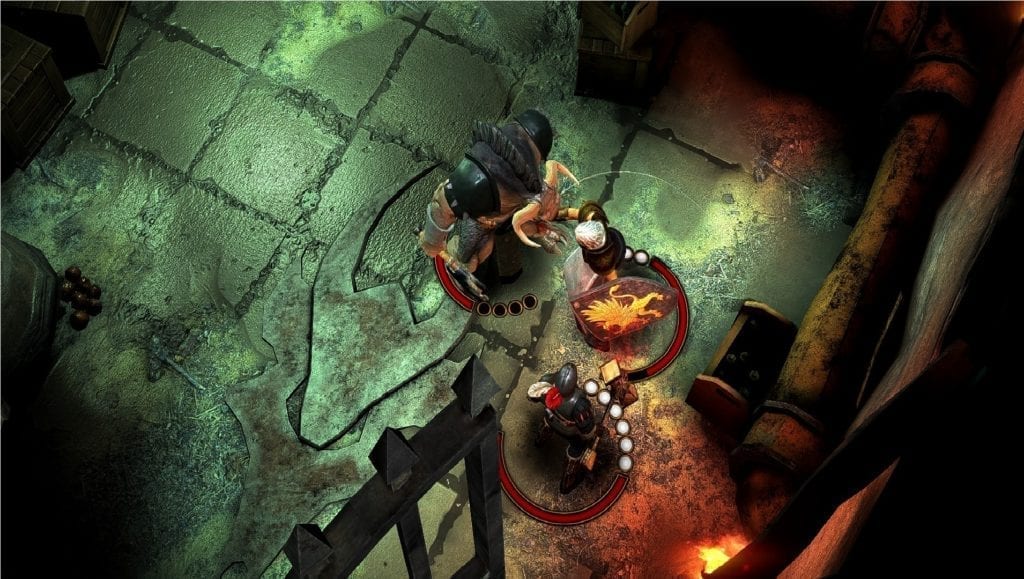
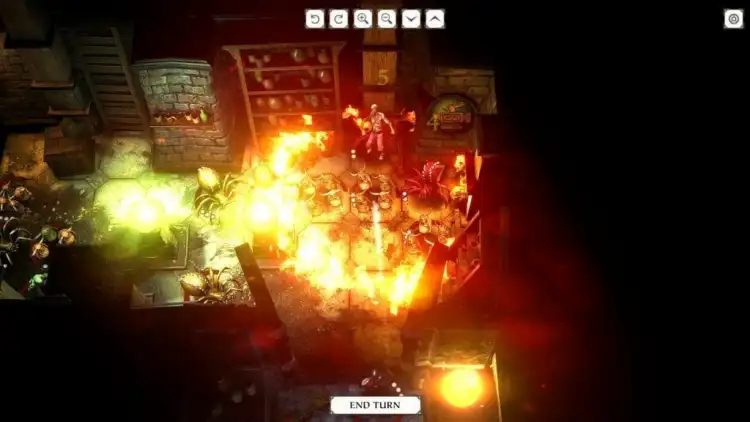
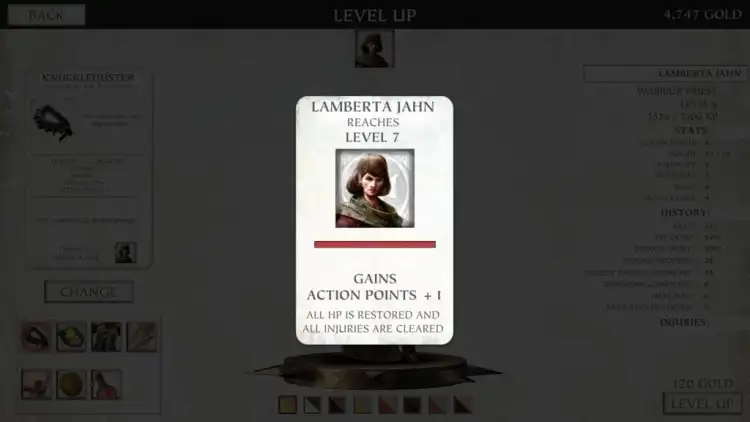
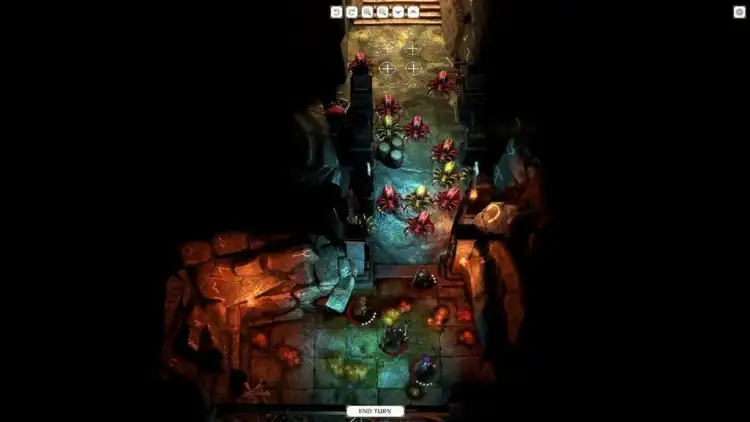
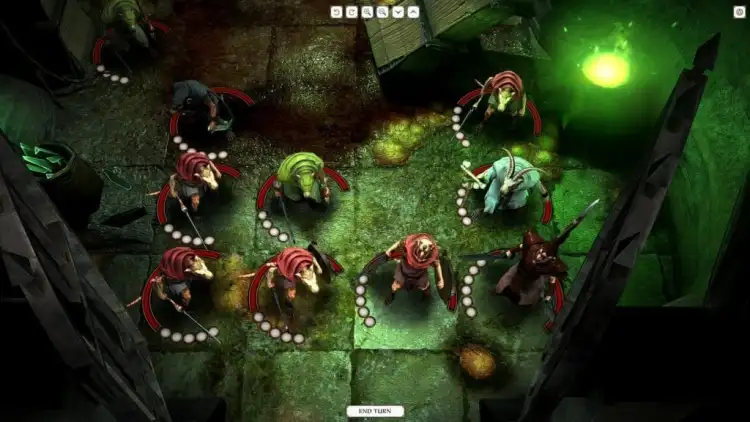
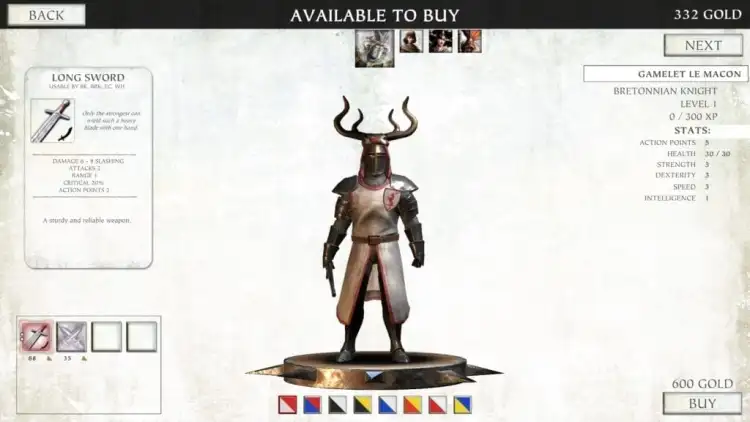
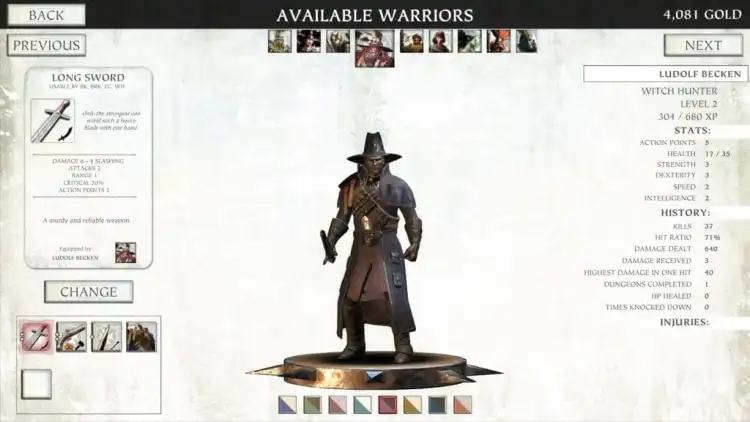
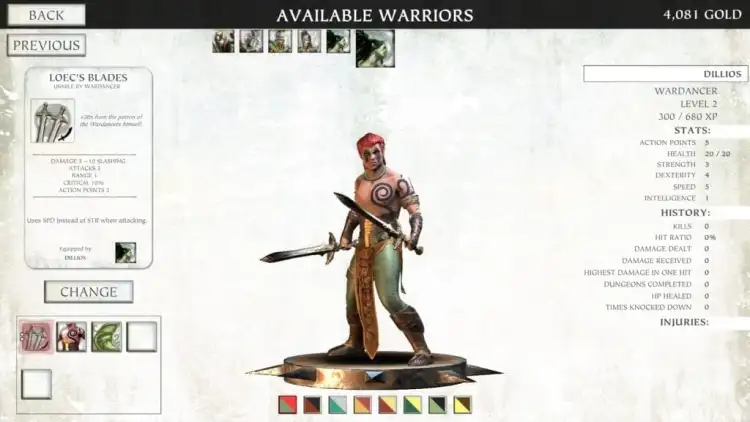
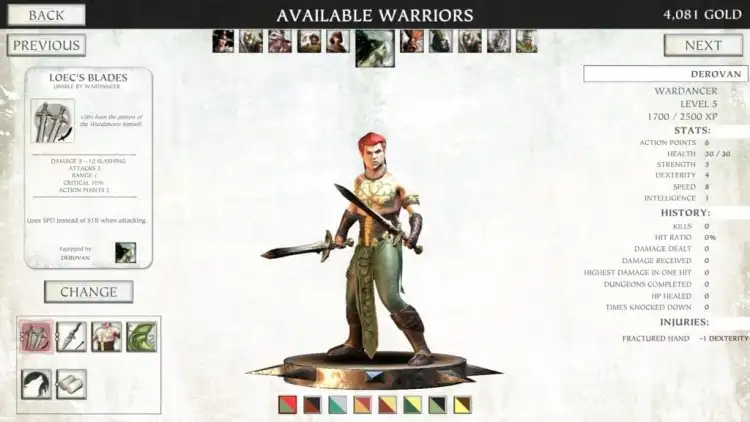
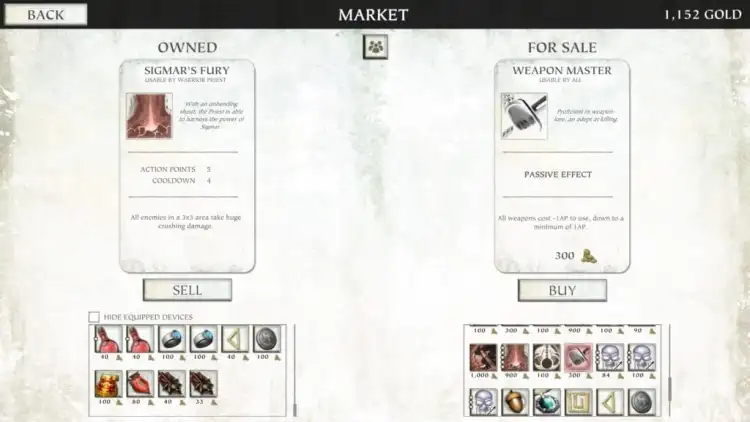





Published: Jan 31, 2019 03:11 pm